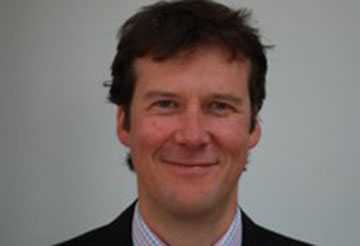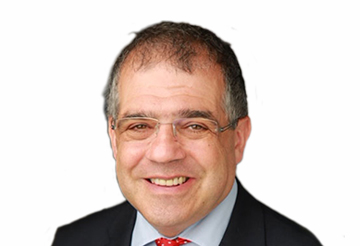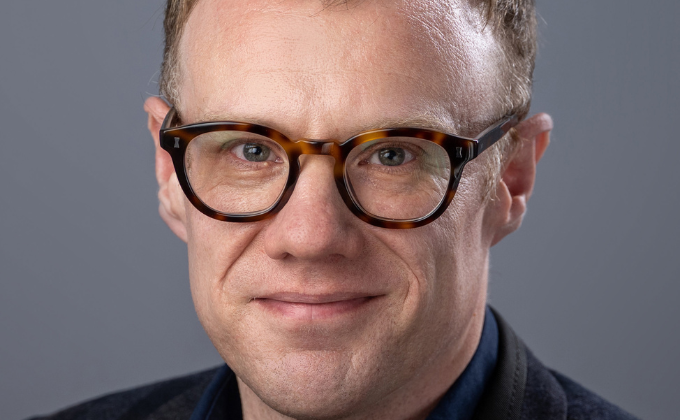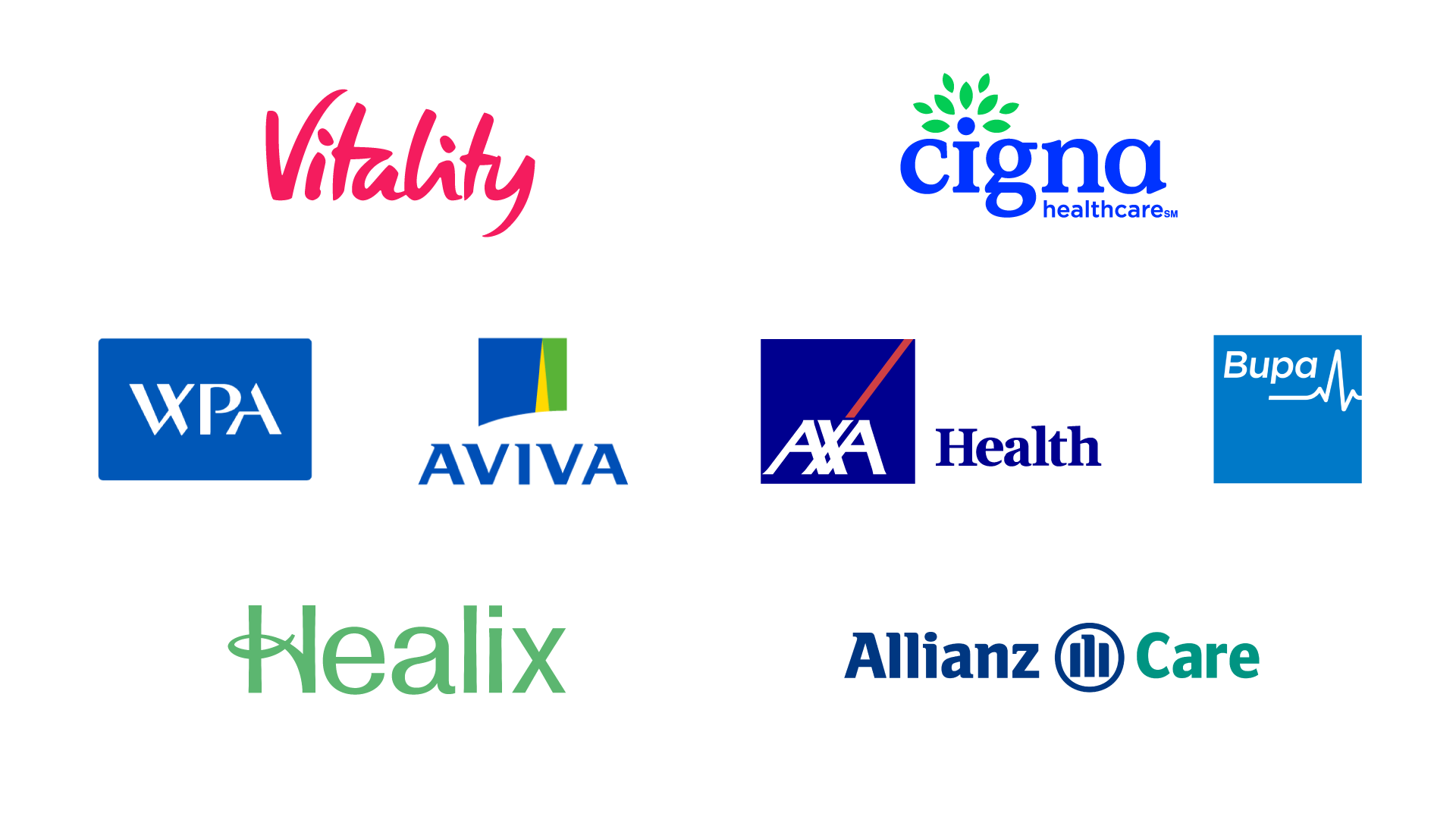Priory Wellbeing Centre Harley Street
- Highly qualified specialists
- Evidence-based outpatient support
- Online and face-to-face appointments
- Mental health assessment from just £49
Located right in the heart of London’s prestigious medical district, Priory Wellbeing Centre Harley Street is one of the UK’s leading mental health clinics. We provide fast access to expert mental health support for a range of conditions, including depression, anxiety, stress, attention deficit hyperactivity disorder (ADHD), addictions and eating disorders. In addition, we offer private autism assessments for adults and children.
The centre also specialises in a cutting-edge treatment known as repetitive transcranial magnetic stimulation (rTMS). This is a Food and Drug Administration (FDA) and National Institute for Health and Care Excellence (NICE)-approved therapy that involves stimulating the brain with an electromagnetic current, to positively induce changes in a person's mood. We also offer high quality business solutions, which provide private mental health support in the workplace.
Click here to enable this content
At Harley Street, we pride ourselves on offering tailored outpatient treatment options within a compassionate and highly therapeutic environment.
Our services are expertly designed to address a wide range of mental health conditions, including depression and anxiety, using a variety of evidence-based therapies to ensure the most effective care for each patient.
Treatment with us could involve a combination of therapies, medication, and ongoing support services, such as online therapy, all tailored to address your specific needs and symptoms.
We are equipped to treat a diverse array of mental health issues, including:
Our clinical experts have extensive experience in delivering a range of therapy types in different formats. Depending on your individual needs, our experts can make treatment recommendations such as:
Repetitive transcranial magnetic stimulation (rTMS) is a non-invasive, effective treatment approved by NICE, the National Institute for Health and Care Excellence. It's primarily used to treat depression but can used to treat OCD, anxiety, and trauma as well.
rTMS stimulates brain areas linked to mood regulation using changing magnetic fields. This treatment is ideal for those unresponsive to medication or therapy, or who cannot tolerate medication. It can also serve as an initial treatment option.
We are proud to be able to offer rTMS treatment for depression and OCD at Priory Wellbeing Centre Harley Street, which is one of the few places in the country where this state-of-the-art treatment can be accessed.
Learn more from our rTMS case study here.
Hear our experts talk more in depth about what rTMS is, how it works, the benefits and what to expect from an rTMS session.
Total watch time: 6 minutes
During an rTMS session, an electromagnetic coil is positioned on your head, either above the temple for depression or on the forehead for OCD treatment. This coil delivers electrical currents that stimulate brain areas involved in emotion and impulse control, enhancing electrical activity and improving neural connections. This stimulation has been shown to significantly reduce symptoms of both depression and OCD.
Before beginning rTMS treatment at Priory, you'll undergo an initial consultation to review your diagnosis and medical history, and discuss all available treatment options. rTMS sessions are conducted by a specialist technician and typically last between 15 to 45 minutes on an outpatient basis. For OCD treatment, sessions may include provocations—controlled actions designed to trigger OCD symptoms and activate relevant brain areas, enhancing the effectiveness of the treatment. These sessions are generally administered four to five times a week over a four-week period, ensuring a controlled and safe environment throughout your treatment.
We have four rTMS experts at Harley Street.
Our rTMS co-ordinators, Adam O'Hagan and Minh Chi Nguyen, help to arrange sessions and work with our multidisciplinary team to make your recovery at Priory as seamless as possible.
We have two consultant psychiatrists, Dr Leon Rozewicz and Geoff Lawrence-Smith, who assess and treat clients.
Our dedicated team work together seamlessly to ensure that you receive tailored mental health treatment from the most appropriate specialist for your needs. Our strong clinical links with nearby Priory hospitals also mean that we can facilitate a smooth transition to more intensive inpatient treatment if this is needed. This approach results in the best individual outcomes, allowing you to overcome your mental health challenges, improve your wellbeing and take steps towards a positive way of life.
At Priory Wellbeing Centre Harley Street, our team of highly qualified psychiatrists and therapists are dedicated to providing exceptional care and personalised treatment plans for a range of mental health conditions, including depression, anxiety, and PTSD, ensuring the best possible outcomes for our patients.




Here, you'll find some commonly asked questions about Priory Wellbeing Centre Harley Street.
Our team deliver clinically proven treatment for a wide range of mental health conditions, including:
We also provide specialist support for mental health issues that may arise within the LGBTQIA+ community, transcultural mental health issues experienced by ethnic minority groups, and support for people who have been victims of bullying, domestic violence, sexual abuse and rape.
We also offer young people’s services at Harley Street, for people between the ages of 4 and 18, who need outpatient support for their mental health challenges.
We offer a range of therapies at Harley Street, which are selected and tailored according to your needs. Our therapies include:
All of the methods we use are evidence-based and delivered by trained practitioners.
Our specialist Harley Street team is made up of psychiatrists, psychologists, therapists and other healthcare professionals. Our specialists are committed to providing the best treatment to everyone we support, and pride themselves on placing you at the heart of your treatment journey. This approach ensures that you're allocated to the best expert for your needs and benefit from a tailored treatment programme that guarantees the most positive outcomes.
At Harley Street, we understand that finding a good specialist to treat your individual condition can seem like a daunting task, with many people not knowing where to look or who to select. You can be reassured that all of our Harley Street experts are qualified to provide the best treatment possible, and have unrivalled clinical experience.
Our team pride themselves on being thought leaders in the field of mental health and are constantly seeking to innovate. We also ensure that our specialists engage in continuous professional development in order to guarantee that their practice is guided by the very latest research and adheres to NICE guidelines.
There are two ways you can pay to receive expert mental health, addiction and eating disorder treatment at Priory Wellbeing Centre Harley Street.
1. Self-paying – this means that you pay for your treatment yourself
2. Payment through private medical insurance – we are a registered and approved provider for all of the UK’s leading private medical insurers, including:
For more information on self-funding your treatment or using your private medical insurance to pay for our services, call us today on 0800 098 4816 or visit our fees and funding page.
Our number one priority is delivering the best possible outcomes for the people who use our services. This goes deeper than simply following national guidelines; we constantly strive to improve ourselves and advance our standing as a thought leader in the field of mental health.
All the treatment we offer at Harley Street is driven by robust regulation and the very highest standards in mental health care. Our services are regulated by the Care Quality Commission (CQC), and demonstrate a consistently strong track record of clinical quality. Our clinical teams undergo regular inspections, ensuring that we can deliver high levels of treatment and support.
By being transparent and diligent in regards to safety, quality, compliance and governance, we continue to operate as the leading provider of private behavioural care in the UK, enabling our patients to overcome their mental health concerns and experience lifelong benefits.

We are a registered and approved provider for all of the UK's leading private medical insurers. Many of the services we offer at Priory can be funded through private medical insurance. This includes:
All clients will have access to our highly skilled and accredited clinicians, many of whom are published experts in their fields of treatment. Whatever your requirements, we are committed to working with you to get your life back on track.